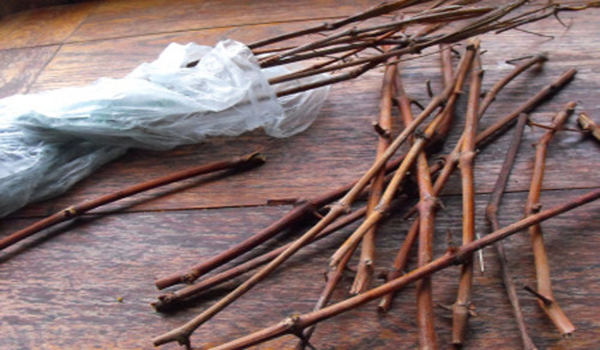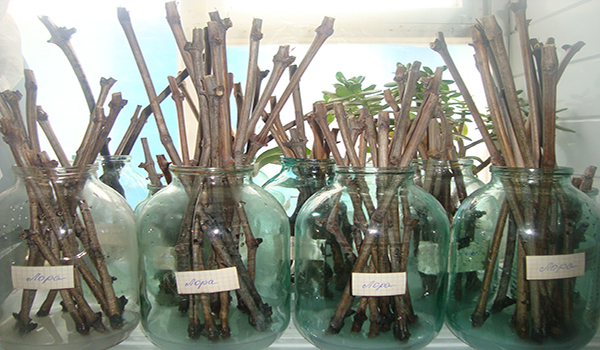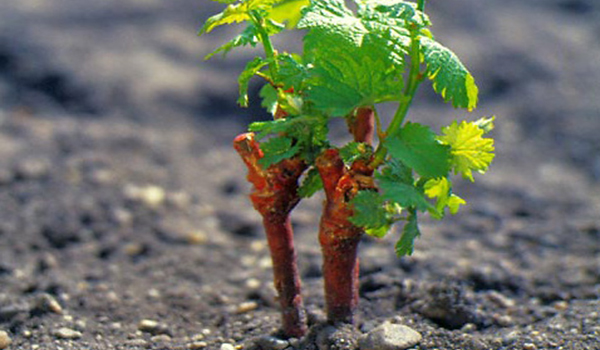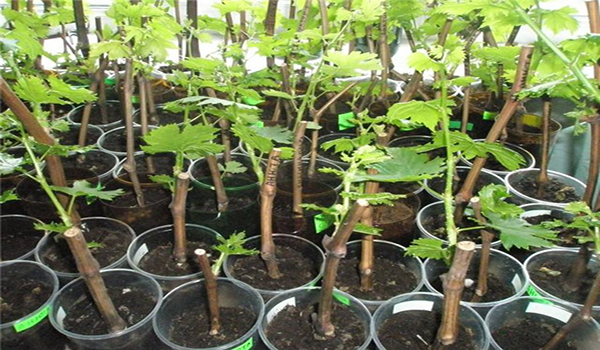How to grow grapes from shanks for a good harvest
Many summer residents dream of having a gorgeous vineyard on their site for home use, but for this you need to buy a bunch of seedlings. Since such a luxury will cost a tidy sum, resourceful gardeners have found an alternative solution - to grow excellent grapes from shanks.
Content
Stocking of shanks
What are shanks?
The cut off parts of the lower one-year-old vine, which has already yielded fruit, are called by gardeners a chubuk. In fact, this is an ordinary stalk, which has several "dormant" buds, no more than 70 centimeters long. On the "trunk" the shank has several large knots, and it is cut off exclusively in autumn: thus, rooting will have more chances after planting than in spring, for example.
Blank
For the successful harvesting of a high-quality shank, it is worth adhering to a few simple rules: the correct cut of the vine and storage. As for the process of cutting the future cutting itself, then only high-quality garden tools that are well sharpened should be used in this case. Otherwise, if the blade of a knife or pruner is rusty or dull, then the cutting will hurt. Therefore, it will no longer make sense to store it before planting. The incision itself should be made only at an acute angle - along an oblique line.

Storage
This stage is no less important than cutting the shank, because if the correct temperature regime is not maintained in the room, or the storage conditions are not maintained, then the future grape bush will die and become unsuitable for planting in the ground. Many gardeners recommend choosing the optimal temperature for storage in the basement or shed, where the stalk will wait in the wings - from 0 to 5 degrees with a plus sign. Also, for the safety of the cut vine, it is advised to use wet sand, and before wrapping the seedling in polyethylene, it is recommended to rinse it. It is necessary to monitor, first of all, so that mold does not start in the room.
 Germination
Germination
Growing good grapes from shanks is half the battle, but germinating the stalk itself is a much more difficult task. In order to successfully cope with it, you need to choose the right "raw material" and properly process it.
Workpiece selection
A good harvest, as a rule, gives the shades of a healthy green hue, without "age" spots or damage. They shouldn't be rotten either. The length is recommended up to 70 centimeters, no more, otherwise they will not survive, and too short will not germinate. The width of the shank varies about 0.8 centimeters. On the trunk, the cut part of the vine should have up to three buds, and the cut itself must be dry.

Preparing to disembark
Planting germinated cuttings is a secondary matter. First, they need to be germinated from the pieces of the vine. To do this, the shanks stored during the winter are taken out and washed with cold water, and then with potassium permanganate. The whole process takes at least six hours. Next, you need to soak the future grape bushes in melt water by a third of the trunk, before that, updating the cuts (about 0.2 centimeters). While they are soaking, special organic solutions can be added to the water to stimulate growth, which are sold in any specialty store.
In a popular way, stimulate root growth with the help of notches. They are made shallow at the very bottom of the process. Next is the process of growing the root system.It is done simply: the shanks are planted in small containers with soil, humus and sand and placed in a dark place without a draft. Within three weeks - watering with warm water and loosening.

After the expiration of the period, good roots should appear. If they are not there, a mistake was made in the process. And for better susceptibility of grapes to weather changes, it is advised, after the second week of germination, to regularly take out containers with cuttings to the air. This will harden the future bush.
Leaving and disembarkation
It is better to start planting the future bush in a permanent place by the middle of the summer season. Firstly, this will make it possible for the seedling to be written with microelements and the sun, and secondly, frosts on the soil or in the air will definitely not harm the grapes from the shanks.
The main thing in this process is not to injure the root, otherwise all your work will be wasted. The place where to plant the sprouting stalk should also be chosen based on the varietal characteristics and climatic preferences of the individual. Gardeners still advise not to experiment with varieties for which some special weather conditions are needed, but to proceed from the existing climatic zone.
To achieve a good harvest, the soil in which the vine is planted must be regularly loosened and moistened. In no case should the soil crack, as the seedling will die. For the best effect, you can use mineral fertilizers from stores or use folk remedies such as a weak solution of honey in plain water (a tablespoon per 10 liters). If all instructions are followed, then by the fall the new pets of your site will reach a height of two meters.
A weak solution of honey (1 tablespoon per 10 liters of water) will help strengthen the root system. As a rule, by the fall, a vine that has grown to 2 meters long has strong roots and several healthy branches.
Video "How to cut and store shanks"
The video, from an experienced person, gives advice on exactly how to cut grape cuttings so that they will take root in the future when planting.
